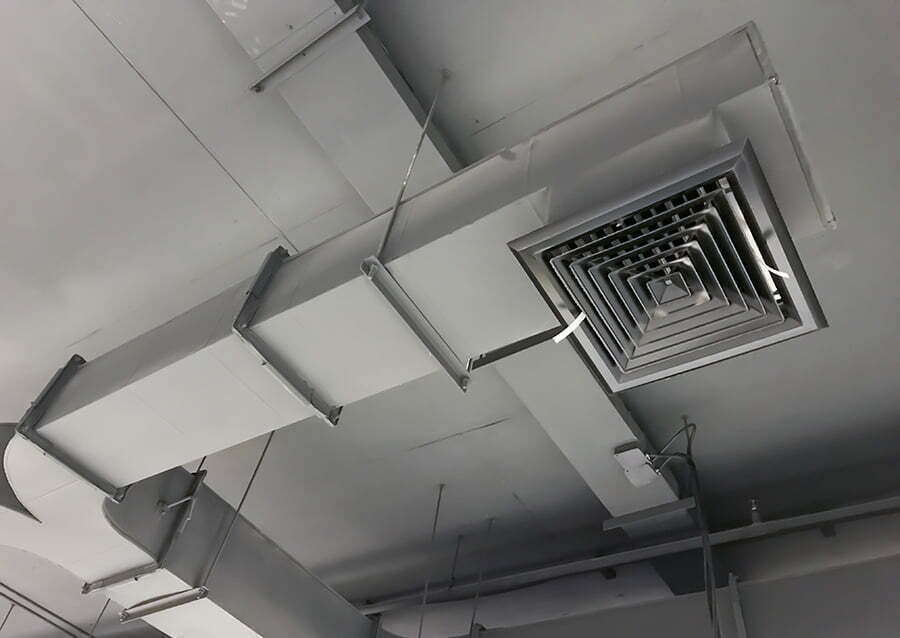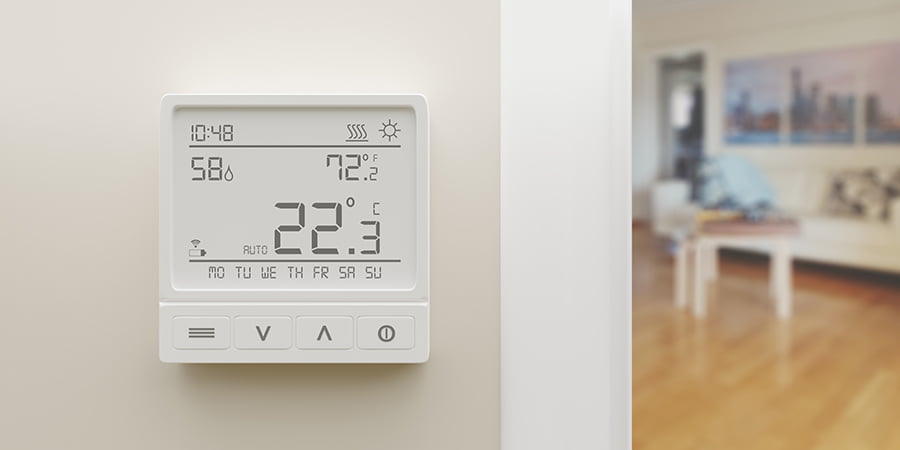We’ll explore some practical tips for maintaining excellent indoor air quality in multi-unit residential buildings that every resident can implement.
Many people living in multi-unit residential buildings struggle with poor indoor air quality due to factors such as shared ventilation systems, high occupancy rates, and inadequate maintenance.
If you’re one of the many people living in a multi-unit residential building and concerned about your indoor air quality, don’t worry – there are steps you can take to improve it!
In this blog post, I’ll be sharing some tips for maintaining good indoor air quality in multi-unit residential buildings so that you can breathe easy and enjoy a healthy home environment.
The Shared Air Dilemma

One of the biggest challenges when it comes to maintaining good indoor air quality in multi-unit residential buildings is the shared air dilemma. When you live in a building with many other people, you’re all breathing the same air – and that can be problematic if someone has poor hygiene habits or uses products that emit harmful chemicals.
I remember one particularly bad experience from my childhood where our neighbor’s cooking smells would waft into our apartment through the ventilation system. Not only was it unpleasant, but it also made me wonder what else might be coming through those vents.
The truth is, shared ventilation systems are a common feature of multi-unit residential buildings and they can contribute to poor indoor air quality if not properly maintained. That’s why it’s important for building managers and residents alike to take steps to ensure that these systems are functioning properly and free from contaminants like mold or bacteria.
Residents should also consider investing in their own portable air purifiers or filters as an extra layer of protection against airborne pollutants. By taking proactive measures like these, we can all breathe easier knowing we’re doing everything possible to maintain good indoor air quality despite living in close quarters with others.
Ventilation: A Breath of Fresh Air

In many cases, these buildings have shared ventilation systems that can spread pollutants and allergens throughout the entire building.
This was certainly true for my childhood apartment building, where we often smelled our neighbors’ cooking or cigarette smoke.
However, there are steps you can take to improve ventilation and ensure a breath of fresh air in your home. First and foremost, make sure that any vents or ducts leading into your unit are clean and free from blockages such as dust or debris.
You may also want to consider investing in an air purifier with a HEPA filter to help remove airborne particles.
Another important step is to open windows whenever possible – even just for a few minutes each day – to allow fresh outdoor air into your home. Of course, this may not be feasible if you live on a high floor or have other safety concerns; but if it’s an option for you, it’s one of the easiest ways to improve indoor air quality naturally.
By taking these simple steps towards better ventilation practices within multi-unit residential buildings like mine growing up, residents can breathe easier knowing they’re doing their part towards improving their overall health while enjoying comfortable living spaces!
Filter Frenzy: Choosing the Right One

As I learned from my own experience, many multi-unit residential buildings have shared ventilation systems that can spread pollutants and allergens throughout the building if not properly filtered.
When it comes to selecting an air filter, there are a few key things to consider. First, look for filters with a high MERV (Minimum Efficiency Reporting Value) rating – this indicates how effectively they capture particles like dust and pollen.
A MERV rating between 8-13 is generally recommended for residential use.
It’s also important to choose a filter that fits your specific HVAC system – consult with your building manager or maintenance staff if you’re unsure which type of filter you need.
Investing in high-quality filters may cost more upfront but can save money on energy bills over time by improving airflow and reducing strain on your HVAC system. Plus, it’s worth investing in clean indoor air!
By taking steps like choosing the right air filter for your unit’s ventilation system, you’ll be well on your way towards maintaining good indoor air quality in multi-unit residential buildings!
Humidity Havoc: Finding Balance

One of the biggest challenges in maintaining good indoor air quality in multi-unit residential buildings is finding the right balance of humidity. As I mentioned earlier, my family struggled with stale and stuffy air in our apartment when I was growing up.
Part of this was due to high humidity levels that made it difficult for us to breathe comfortably.
Humidity can be a tricky thing to manage, especially when you’re living in a building with shared ventilation systems and multiple units. If one unit has too much moisture, it can affect the entire building’s air quality.
To find balance, start by monitoring your home’s relative humidity levels using a hygrometer or smart thermostat that includes this feature. The ideal range is between 30-50%.
If your home falls outside this range on either end (too dry or too humid), consider investing in a dehumidifier or humidifier respectively.
It’s also important to address any sources of excess moisture such as leaky pipes or faucets and ensure proper ventilation throughout your space – especially during activities like cooking and showering which generate steam.
By finding the right balance of humidity within your multi-unit residential building, you’ll not only improve indoor air quality but also create an environment where everyone can breathe easy!
Cleanliness Crusade in Common Areas

One of the biggest challenges in maintaining good indoor air quality in multi-unit residential buildings is ensuring that common areas are kept clean. In my childhood building, the hallways and stairwells were often neglected, with dust and debris accumulating over time.
This not only made these areas unsightly but also contributed to poor air quality throughout the building.
To combat this issue, many buildings have implemented a “cleanliness crusade” where residents are encouraged to take responsibility for keeping common areas clean. This can involve simple tasks such as sweeping or vacuuming hallways regularly or reporting any spills or messes promptly so they can be cleaned up quickly.
In addition to resident involvement, it’s important for building management to prioritize regular cleaning of shared spaces such as laundry rooms and fitness centers. These high-traffic areas can quickly become breeding grounds for bacteria and other pollutants if not properly maintained.
By working together on a cleanliness crusade, residents of multi-unit residential buildings can help ensure that their indoor air quality remains at healthy levels while also creating a more pleasant living environment overall.
Smoke Signals: Managing Tobacco Use

As a former smoker, I know firsthand how difficult it can be to quit smoking and how challenging it can be for non-smokers living in close proximity to smokers.
If you’re a smoker living in a multi-unit residential building, consider quitting or at least taking your smoking outside. Not only will this improve the air quality for those around you, but it will also benefit your own health.
For non-smokers who are concerned about secondhand smoke exposure, there are steps you can take as well. Talk with your landlord or property manager about implementing policies that restrict smoking indoors and designate outdoor areas away from entrances and windows where smokers can go without affecting others’ health.
By managing tobacco use within multi-unit residential buildings, we not only improve indoor air quality but also promote healthier lifestyles for everyone involved.
Green Guardians: Indoor Plants to the Rescue

Indoor plants are natural air purifiers that can help remove harmful toxins from the air, such as formaldehyde and benzene, which are commonly found in building materials and household products.
As a child living in a stuffy apartment building, my parents always made sure to have plenty of indoor plants around our home. Not only did they add some much-needed color and life to our space, but they also helped us breathe easier by filtering out pollutants from the air.
Some great options for low-maintenance indoor plants include spider plants, peace lilies, snake plants (also known as mother-in-law’s tongue), pothos vines or philodendrons. These types of houseplants require minimal care yet provide maximum benefits when it comes to improving your home’s overall health.
So if you’re looking for an easy way to boost your indoor air quality while adding some natural beauty into your space – consider becoming a “Green Guardian” with these amazing houseplants!
Read Also
- How Outdoor Air Quality Affect Indoor Air Quality in High-rise Buildings
- Can Air Conditioning Units Affect Indoor Air Quality?
- How Outdoor Air Quality Affects Indoor Air Quality in Your Home
- The Importance of Maintaining Good Indoor Air Quality for Health and Well-being
- How Does Temperature Affect Indoor Air Quality?